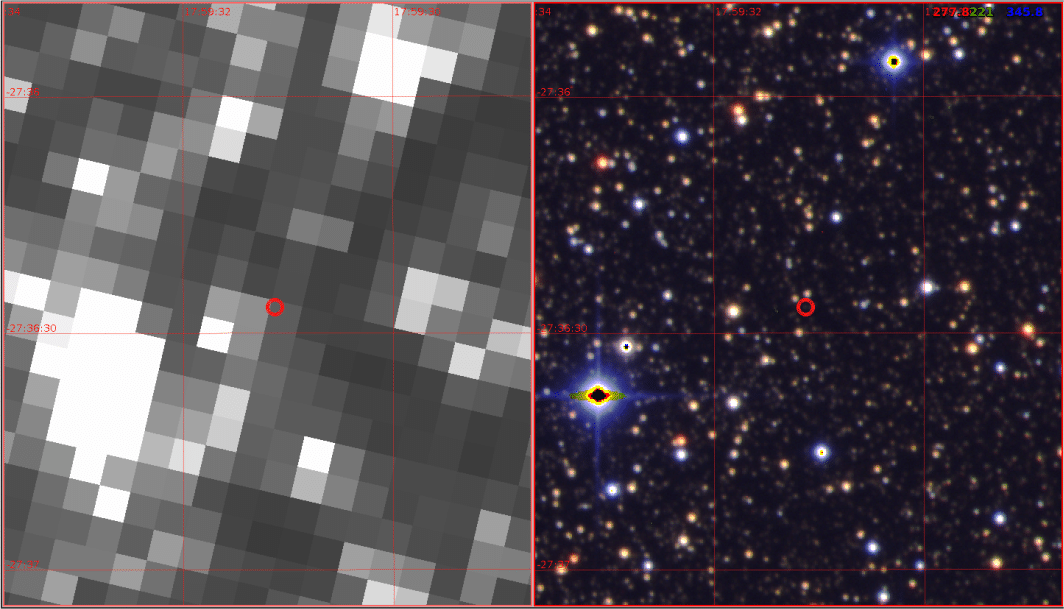
It is the most distant planet ever discovered by the now-retired planet hunter Kepler. And that with the help of a special detection method.
For years, the Kepler space telescope peered into the night sky in search of yet unknown worlds. In the end, the planet hunter uncovered at least 2600 planets. We can now add one more. Because although Kepler has been retired for several years, astronomers are surprised to find a hitherto overlooked exoplanet in old data.
twin brother
And what kind! Named K2-2016-BLG-0005Lb, the newly discovered exoplanet looks suspiciously like Jupiter. For example, it has a comparable mass and is at almost the same distance from its parent star. The planet can therefore rightly be called the almost identical twin brother of Jupiter.
Distance
In addition, K2-2016-BLG-0005Lb was found at a record distance of a staggering 17,000 light-years away; the most distant exoplanet ever discovered by the now-retired planetary hunter Kepler. The exoplanet is even twice as far away from us as the previous record holder.
Micro lens effect
As mentioned, the newly discovered exoplanet was hiding in old data from the Kepler space telescope. This data was collected in 2016, when the telescope monitored millions of stars near the center of the Milky Way. Unlike most of the planets that Kepler discovered, K2-2016-BLG-0005Lb was not discovered using the transit method, but using the so-called microlens effect (see box).
The microlens effect occurs when light from a distant star is bent and amplified by the gravity of a star in the foreground. If a planet orbits that foreground star, the light from the distant star will briefly brighten.
K2-2016-BLG-0005Lb is the first planet discovered from space using the microlens effect. A great performance from Kepler. “Kepler was not designed to find planets using microlensing,” said researcher Eamonn Kerins. “So it’s amazing in many ways that it’s done this.”
Not easy
Incidentally, it is not so easy to detect planets in this way. “Seeing the microlens effect requires near-perfect alignment between the foreground planetary system and a star in the background,” explains Kerins. The chance of this is significantly small. “However, there are hundreds of millions of stars toward the center of our Milky Way,” Kerins continues. “So Kepler simply sat there staring at them for three months.”

View of the region near the Galactic Center where K2-2016-BLG-0005Lb was found. Left shows the region as seen through Kepler’s eyes, right through Canada-France-Hawaii Telescope (CFHT) eyes. The planet is not visible, but gravity affected the light from an observed faint star in the center of the image (circled). Kepler’s very grainy view of the sky required specialized techniques to restore the planet signal. Image: The University of Manchester
After developing specialized analytical methods, researchers found promising signals in the old Kepler data last year. Of the five signals, one showed clear indications consistent with the presence of an exoplanet. After further investigation, astronomers finally uncovered K2-2016-BLG-0005Lb.
It’s possible
The researchers show with their studies shows that planets can indeed be detected using the microlens effect. What makes this method so attractive, among other things, is that planets that orbit at a greater distance from their star can be discovered in this way.
Thanks to Kepler, we now get a sneak peek. Because later this decade, NASA will launch the Nancy Grace Roman Space telescope, which will hunt thousands of distant planets using the microlens method. It is expected that this telescope will bring many unknown worlds to light. “Not only will we find out how ‘normal’ our own solar system is, the data will also allow us to test our ideas about how planets form,” Kerins said. “This is just the beginning of a new exciting chapter in our quest for other worlds.”
Source material:
†NASA’s Kepler telescope delivers new planetary discovery from the grave” – University of Manchester
Image at the top of this article: ffflflflfl via Pixabay